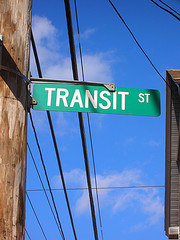
The Cul-de-Sac Syndrome:
Turning Around the Unsustainable American Dream
John F. Wasik
Bloomberg, 2009
207 pages
US$24.95
ISBN 978-1576603208
John Wasik, a columnist for Bloomberg News and the Huffington Post, has written a book that examines the recent period in our history when homeownership actually made many people poorer. They have been forced to tap their home equity, go into debt to finance their unsustainable lifestyle, and contributed little to retirement investing because of the misguided assumption that home appreciation would fund their future years. Basically the period of time when homes stopped being a place to live and raise family, and became a temporary abode for a migrant family that changed residences every 5 to 7 years.
As John Wasik himself has said on his Cul-De-Sac Syndrome website:
After a lifetime of research and observation, an agonizing decline of the housing market, publication delays and collapse of the stock market, my Cul-de-Sac Syndrome has braved all odds to be published.
Why should you care about this book? It’s about our homes and communities and how we need to re-invent, re-envision and re-build the American Dream if we want to survive in this contentious century. Economics meets ecology in this radical new look at what we’ve taken for granted as a birthright.
The plight of the housing market writ large. The unsustainable “spurbs”, Wasik’s name for car-dependent sprawling urban areas, dot the land. I lived for a time in Colorado Springs and had friends who lived in one these spurbs. They had a twenty minute drive to get to the nearest grocery store, and the neighborhood was more a fenced-in plots of anonymous neighbors, than a community.
The City of Kenmore has a chance to make itself a more livable city, a more walkable city. It also needs to make itself more attractive to more manufacturing and office jobs, since retail and other service oriented businesses just isn’t enough.
Decide for yourself, you can pick up a copy of his book from my Sustainable Living Store.




Housing and Transportation Affordability Index
Posted in Commentary, Factoid, Media, tagged car culture, carfree, footprint, housing, Sustainable, transit, Transit Oriented Design on March 24, 2010| 1 Comment »
Ever wonder how really affordable your house or apartment is? So have I and the Housing and Transit Affordability Index will show you the numbers. Based solely on rent cost, my apartment is fairly affordable, at 17% of my income. However, if you add in transportation costs, it more than doubles, to 40% of my income.
H+T Affordability Index: Seattle–Bellevue–Everett, WA: Comparing Housing Costs, % Income for Renters to Housing + Transportation Costs, % Income for Renters
2125 W North Ave, Chicago, IL 60647 · Tel: (773) 278-4800 · Fax: (773) 278-3840
If I compare the annual cost of driving to work versus the annual cost of transit, I find that I’m saving a ton by working from home and taking the bus whenever I can. The difference is amazing: $51 for transit a year, versus $2,048 for a car per year. The cost of transit is spread out across all riders, while the cost of operating your car is solely in your hands and your pocketbook. It costs more to own a car than to take the bus.
H+T Affordability Index: Seattle–Bellevue–Everett, WA: Comparing Annual VMT Cost ($) to Annual Transit Cost ($)
2125 W North Ave, Chicago, IL 60647 · Tel: (773) 278-4800 · Fax: (773) 278-3840
Read Full Post »